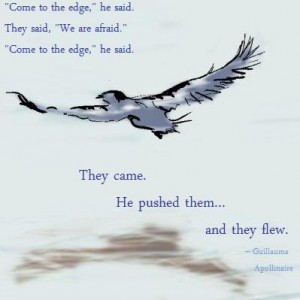This is a continuation of my last post, though I focus on a slightly different element of “SHOW, DON’T TELL.” Those three little words constitute one of the High Commandments of effective writing. It sounds so easy, doesn’t it? Yet it requires commitment, determination, vigilance and inexhaustible effort.
We writers tend to get lazy with our prose as we rush through the first draft of a story. We so focus on the plot, the characters, the setting, the central conflict and eventual resolution—a proper focus, of course—that we pay too little attention to the words. If I may revisit a metaphor I use often: we so focus on the forest that we forget to enjoy the trees.
This, my fellow writer, is why the writing gods created self-editing, lest we fail to honor our covenant. We have much to address in the self-editing process, but for the purposes of this blog entry, I’ll focus on that one commandment: “SHOW, DON’T TELL.”
We most engage a reader when we create for him a scene he can visualize, when we fire-up the film projector in his mind. The longer our piece drags on without affording him the opportunity to exercise his mind’s eye, the likelier he is to set our story aside out of boredom. Put another way, the reader should see not our words, but the images those words create. Think of words as your paint and the keyboard as your brush, and paint a picture to compel the reader forward.
Simile and metaphor function as effective tools in this artistic pursuit, as they force the reader—if you’ve done your job well—to visualize your image and translate it to, or associate it with, the underlying, true meaning of your scene. Symbols will also enhance this experience for the reader. As a simple example, a gray, overcast day mired in a constant drizzle might highlight and heighten your character’s depression.
As is true of so many writers’ tools, you must use these to maximum effect, which not only means using them in the proper places, but also that you must not overuse them. Too much of a good thing can be… well, not so good. Give the reader a slice of chocolate cake as dessert, but don’t skip the meat and vegetables and force him to eat the entire cake at one sitting. We writers mustn’t make our readers sick.
As a rule, the shorter your similes and metaphors, the more frequently you can employ them. If you pop a quick, one-sentence simile into your story, you needn’t wait several pages to offer another. On the other hand, if you just completed a three-page metaphor, you don’t want to jump into another metaphor on the next page. Like all artists, you must apply a deft hand. Let your instincts guide you initially, and let your editor, your writers’ group, or your trusted reviewer help you refine and polish it. I offer now a series of examples from pieces I’ve edited or reviewed. As always, I shall keep confidential the authors’ names and story titles to protect the not-so-innocent.
TELL: He was by far the tallest person in the meeting room. >>>>> Note: First, the author started with the weak state-of-being verb. Second, the author provided nothing to stretch the reader’s imagination, to engage his mind’s eye. >>>>> SHOW: He towered above the others in the meeting room as if they’d all skipped over from the local chapter of the Lollipop Guild. >>>>> Note: Did you just see that moment after Dorothy landed in Oz? Perhaps you even heard their song. In the end, you should have concluded that the character “was by far the tallest person in the meeting room.”
TELL: He walked slowly and without enthusiasm toward the door. >>>>> Note: The author fell into a typical lazy trap here. Few adverbs are duller than slowly, quickly, loudly or quietly. Remember the value of body language to express a character’s mood and mental state. >>>>> SHOW: His shoulders slumped and his face drooped, as he dragged his feet toward the door.
TELL: “What are you doing with these jokers?” asked Little Butch. <P> Rosemary said, “Partying. What else?” She was sloshed. “You still going with Jennifer?” >>>>> Note: At issue is the simple description: She was sloshed. Sometimes simple is fine, and you don’t want to paint with too heavy a hand, but consider these types of sequences opportunities to paint a picture for the reader. >>>>> SHOW: “What are you doing with these jokers?” asked Little Butch. <P> “Partying. What else?” Rosemary’s words mixed in an alcoholic slur as she leaned against the car to prevent herself from falling over, and her eyelids bobbed in time with her head, as if they weighed a hundred pounds each. “You still going with Jennifer?”
TELL: The sky was a brilliant blue with a few white wisps scattered here and there. Her long smooth legs were warm from the sun. >>>>> Note: The key here is to replace the weak state-of-being verbs with more active verbs that bring the image to life for the reader. This typically requires some simple restructuring. >>>>> SHOW: Sunlight, broken occasionally by scattered white wisps, radiated through a brilliant blue sky and bronzed her long, smooth legs.
TELL: He knelt by the gravestone, completely exhausted and desperately needing sleep. He’d never been so sad and lonely. He couldn’t imagine what life would be like without Karen, the only woman he’d ever loved. >>>>> Note: It’s important to remember that readers hear you telling them that something happened, or merely that something was, when you pile on the adverbs and adjectives. Conversely, they envision the scene (see what happened) when you utilize active verbs and descriptive nouns. >>>>> SHOW: He collapsed to his knees alongside the gravestone, and expelled his last ounce of energy in a sputtering, tearful gasp. Silence shrouded the cemetery, broken only by his heavy breathing and the uncertainty that pounded like war drums in his mind. The love of his life, the object of his greatest dreams and desires, lay six feet beneath him, beyond his reach for all time. How would he survive without Karen?
Remember: The reader must see more than your words; he must see the images those words create. When you write, live within the scene, and paint a picture of everything that happens around you. Don’t tell the reader what happened; let him see what you see, hear what you hear, feel what you feel, as though he’s standing beside you inside the scene, witnessing and experiencing it right along with you and your characters.
‘Til next time, and as always, remember: To write well, you must work hard. To succeed in this tough gig, you mustn’t be lazy (or discouraged).
———-




Thanks, Amanda. The greatest complaint writers have against editors is this: "Okay, so now I know it's wrong. So? How do I fix it?"
I hope these examples help with that.
Good advice. Once again, I think it will be helpful for people to see examples of the difference between showing and telling.